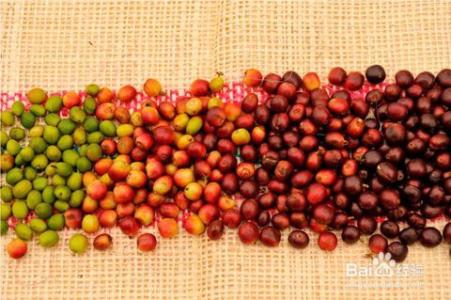Introduction of Starbucks Coffee Bean Grinding scale Variety production area treatment method taste Manor
Introduction of Starbucks Coffee Bean Grinding scale Variety production area treatment method taste Manor
. Mocha pot cooking method
The mocha pot is also divided into upper seat and lower seat. But cooking is much simpler than siphoning. Fill the lower seat with water. It can't be filled. Just fill it up to 8 points. Then put the cylindrical bucket in the lower seat. Put the coffee powder in the small cylinder. After putting it away. Cover the coffee powder with a piece of filter paper. Screw up the upper and lower seats after the cover is finished. Remember to tighten it. Then cook it on the fire. When all the water in the lower seat goes to the upper seat. Turn down the fire at this time. Cook for 50 seconds. After cooking, you can find a small cup to pour out of the pot to drink! Belgian cooking
Belgian pots are more expensive. A typical set of Belgian pots costs about 500 to 1000 yuan. Now let me introduce how to do it.
Belgian pots are also separate. But not the upper and lower seats. It's the same set. It is divided into left and right sides. The one on the right is the iron pot. The one on the left is a glass pot. First put the water in the iron pot and bring it to the boil. Grind the coffee beans with a bean grinder. Note here that the Belgian cooking is different from the others. It puts more beans. It's about 20 to 30 grams. After grinding, put the coffee bean powder into the glass pot. Put the lid on. When the water boils, it automatically flows from the iron pot to the glass pot. Start counting the time when it all flows into the glass pot. Turn off the fire in 1 minute. At this time, the water will flow back into the iron pot. Wait until it all flows away. There is a switch like a faucet in the iron kettle. You can open that for coffee.
Start extracting coffee. If there is no scale on your coffee cup, you need to measure the total weight of the coffee (28-32g). Measuring weight can help you determine whether coffee extraction is fast or slow, which is much more accurate than visually measuring the flow rate of coffee. This is not to say that visual inspection is useless, but at least the numbers won't lie to you when most brands of bean grinders on the market store 60g ground coffee powder. According to our experience, you need to store at least 100g of coffee powder in the bean grinder before you can start debugging the machine, and the debugging effect is more obvious. So, you need to make at least three more espresso before you start debugging the bean grinder, and when you're done, you have to make at least five or more cups of coffee. This is very important! The last thing you want to do is go back to work and then retest and debug your machine. If you're using a graduated coffee cup, that's great. But you still need to measure the total weight of the coffee to better determine whether the grinder needs to be readjusted. If you use an automatic divider, the total weight of the coffee you make will have an error of about 3G. Since the scale on the cup can help you determine the liquid volume of coffee, you need to spend more energy on measuring the extraction time of coffee.
Let me tell you the importance of these data. Whenever we adjust the coarseness of the bean grinder to + /-1 scale, the extraction time of coffee will change by 4-5 seconds, and the total weight of coffee will have an error of 10g.
Since we use a large bean grinder, the above changes may not be so obvious on a small bean grinder. But this is enough to prove how important the data is for debugging the bean mill.

Important Notice :
前街咖啡 FrontStreet Coffee has moved to new addredd:
FrontStreet Coffee Address: 315,Donghua East Road,GuangZhou
Tel:020 38364473
- Prev

Picture explanation of coffee bean washing method-the difference between sun-washed and washed coffee beans
Coffee bean washing method photo explanation-the difference between sun-cured and washed coffee beans 1, choose beans: put the harvested fruit in the water tank, the ripe fruit will sink, while the unripe and overripe fruit will float up and can be removed. 2, drying: put the selected ripe fruit in the square for 5-6 days until it is fully dry. At this time, the fruit becomes dark brown and watery.
- Next

The difference between sun-washed coffee beans and sun-washed coffee beans
Sun washing Honey treatment-the difference between sunburn and washed coffee beans honey treatment removes the peel and pulp, but retains some or all of the pectin (honey). Washed pericarp, pulp and pectin are all washed off and fermented, also known as full washing. This traditional way of handling Arabica coffee beans is still used in most countries. Others skip the fermentation step directly and adopt high pressure.
Related
- Guji coffee producing area of Guji, Ethiopia: Humbela, Shakiso, Wulaga
- What is the most expensive variety of Qiloso in BOP multi-variety group?
- How to store the coffee beans bought home?
- Why are Yemeni coffee beans so rare now?
- Ethiopian Sidamo all Red Fruit Sun Sun Santa Vini Coffee beans
- SOE is mostly sour? What does it mean? Is it a single bean? what's the difference between it and Italian blending?
- Is Italian coffee beans suitable for making hand-brewed coffee?
- How to choose coffee beans when making cold coffee? What kind of coffee beans are suitable for making cold coffee?
- Just entered the pit to make coffee, what kind of coffee beans should be chosen?
- Can only Japan buy real Blue Mountain Coffee? What are authentic Jamaican Blue Mountain coffee beans?

